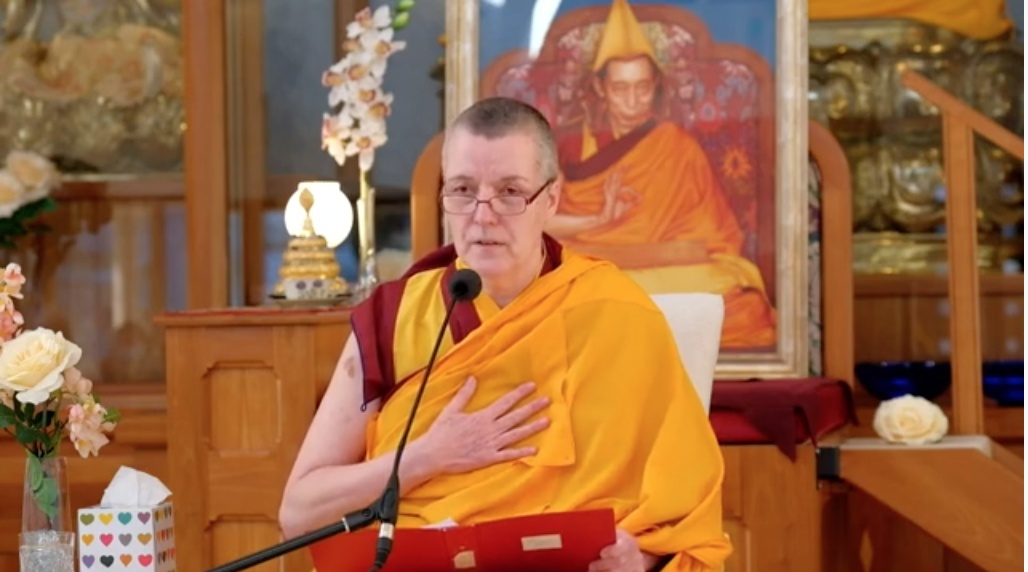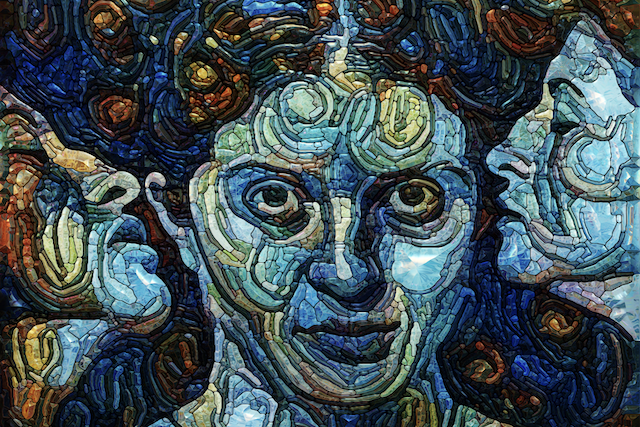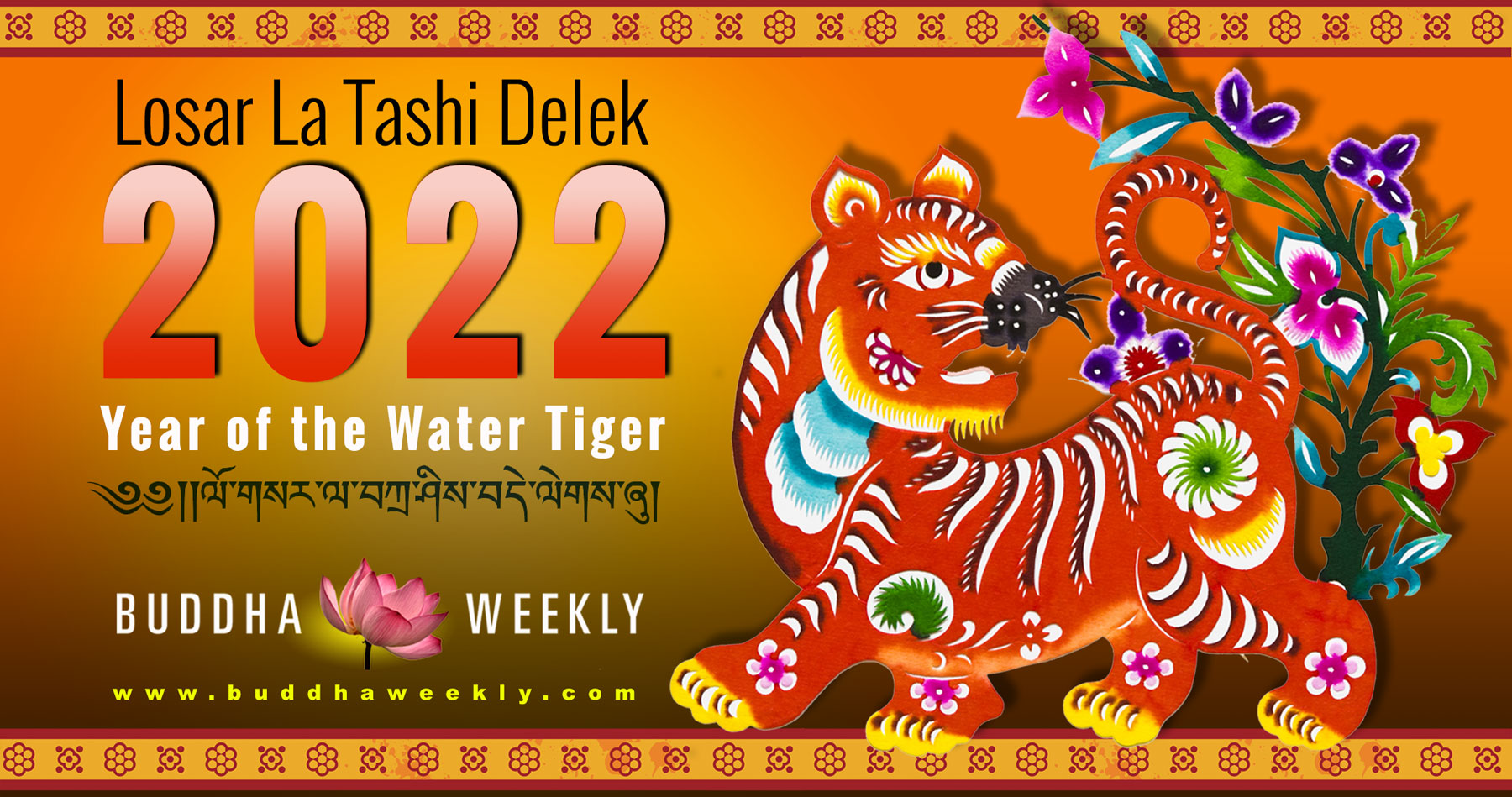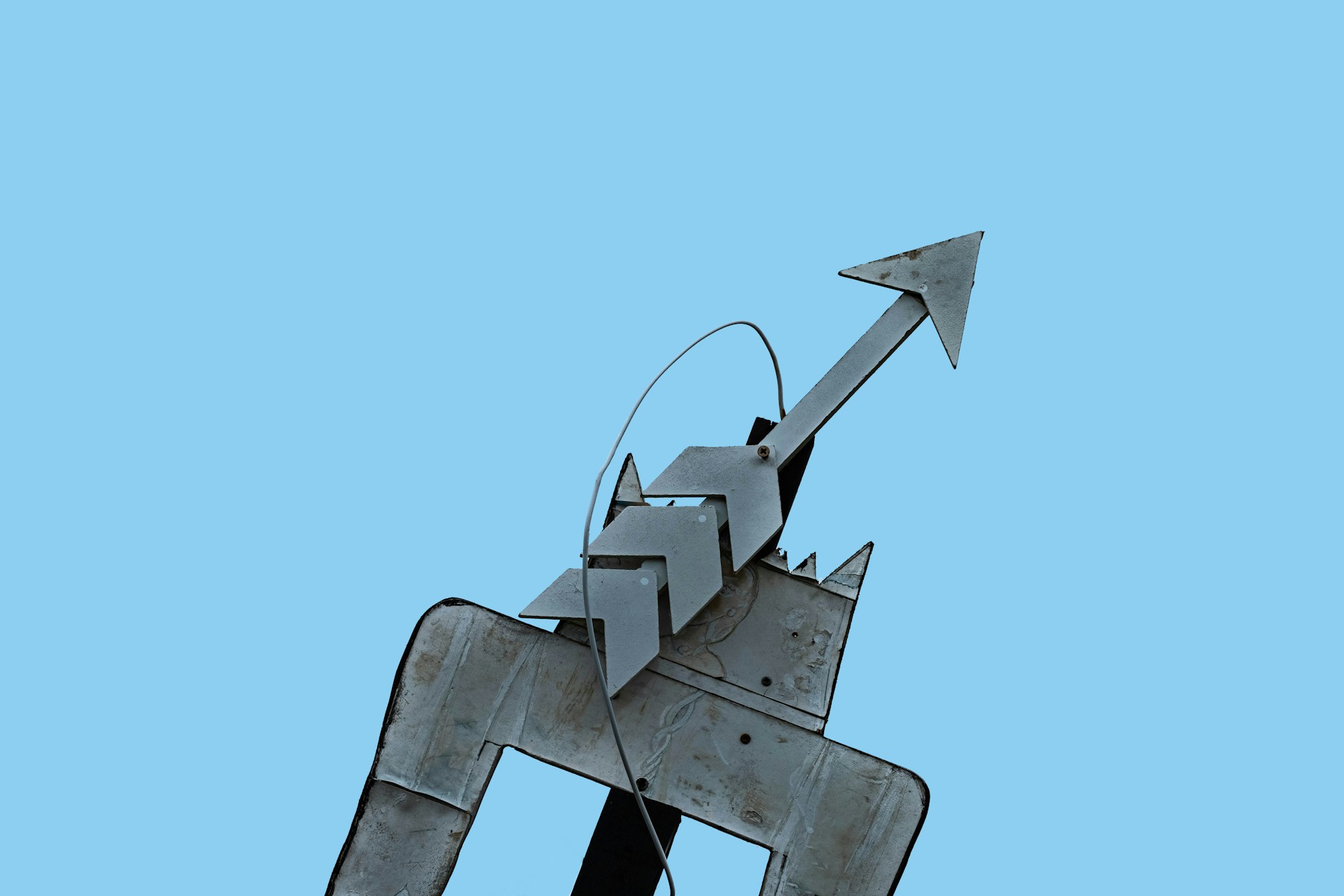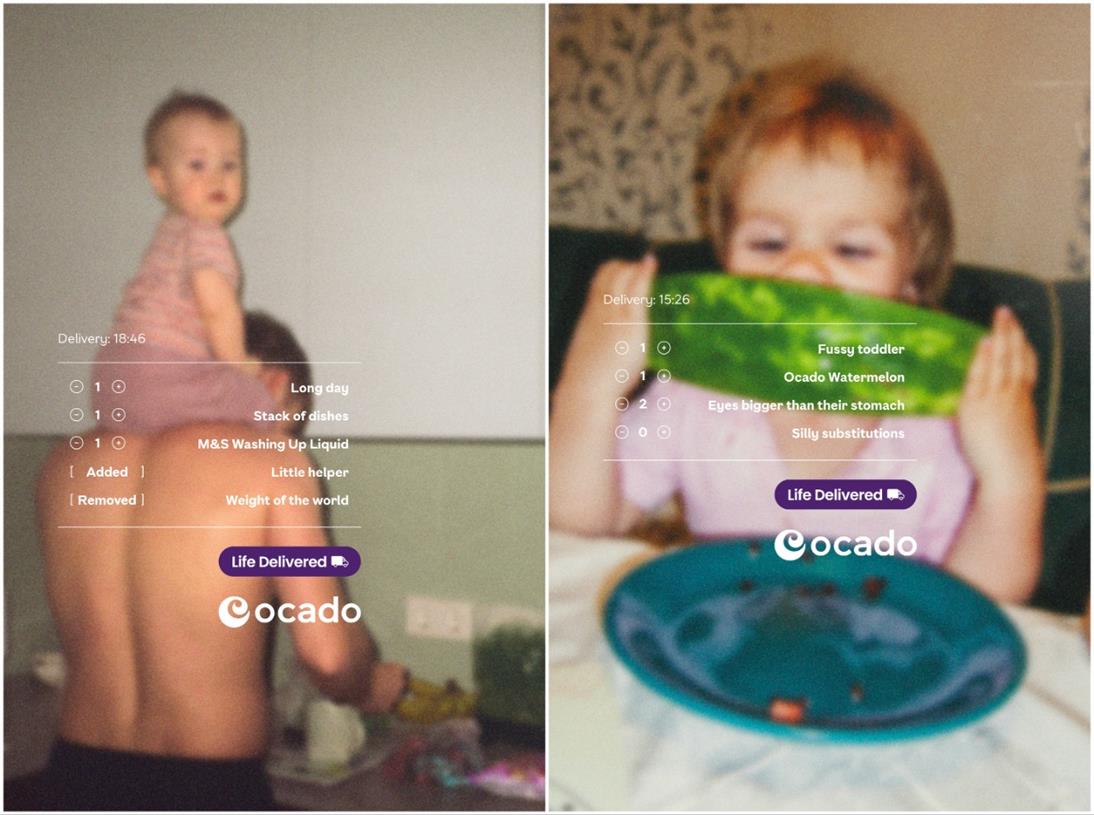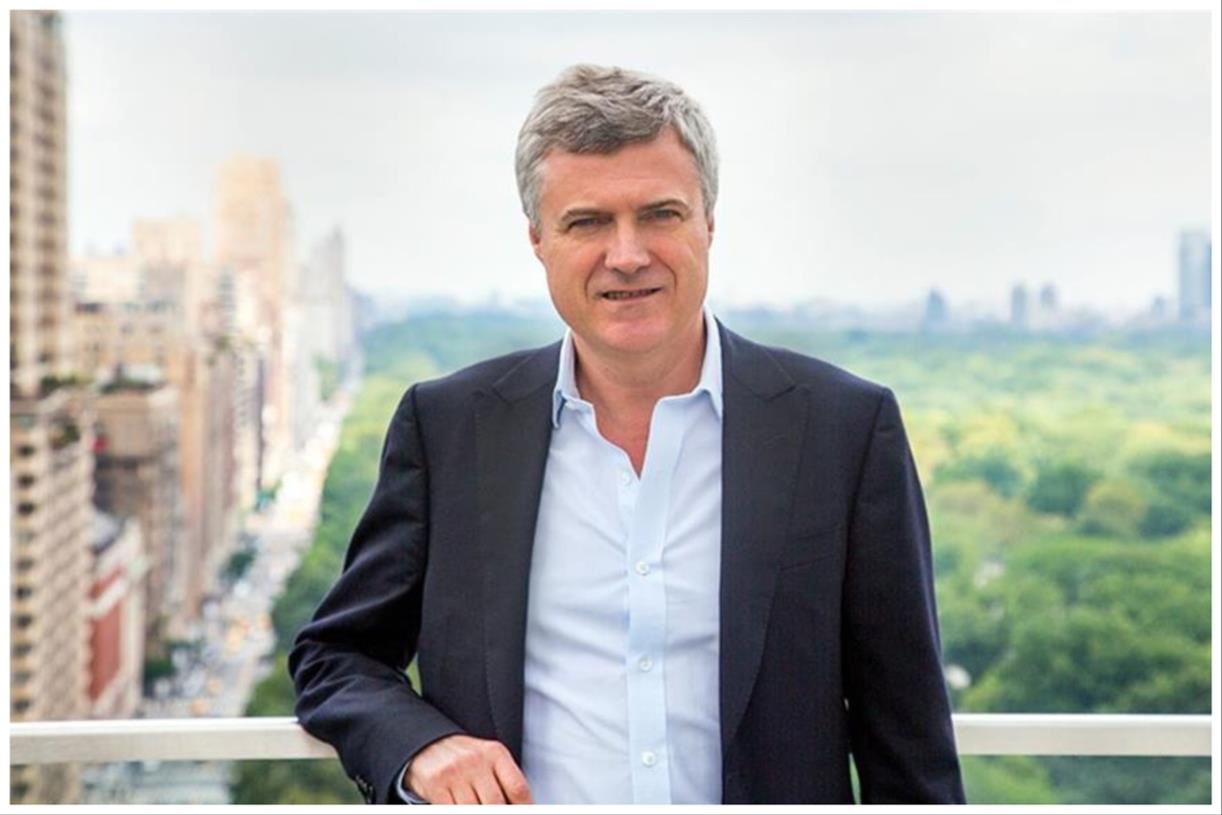How to Make Friends with Your Monsters
Anger, fear, envy—usually we’re ashamed of our so-called monstrous emotional patterns. Yet if we make friends with our monsters, says Tsoknyi Rinpoche, magic happens. We are no longer afraid. The post How to Make Friends with Your Monsters appeared...

Anger, fear, envy—usually we’re ashamed of our so-called monstrous emotional patterns. Yet if we make friends with our monsters, says Tsoknyi Rinpoche, magic happens. We are no longer afraid. Illustrations by Jing Li.

When I first started teaching, I used a traditional style, focusing on theory and emphasizing fine distinctions from traditional texts. Most students were well-educated, intellectually grasping the meaning and asking sharp questions. I thought, Wow, these people are really smart! They should make quick progress. But after a decade or more, something wasn’t feeling quite right. Students were “getting it” up in their heads, but seemed stuck in the same emotional and energetic habit patterns year after year. This stuckness prevented them from progressing in their meditation practice.
I began to question whether the approach treasured so much by my tradition was actually touching students in the way intended. I pondered why students around the world were understanding the teachings but not able to embody them and deeply transform.
I suspected that the channels of communication between their minds, their feelings, and their bodies were blocked or strained. From the Tibetan viewpoint all these channels should be connected and flowing freely. Yet I saw that my students couldn’t integrate the understanding their intellects were capable of, because they couldn’t digest them at the level of the body and feelings.
This led me to change how I teach meditation. Now I focus first and foremost on healing and opening the channel between the mind and feeling world, to prepare the student’s whole being. The technique I describe here, and others, reflect this new approach, which I’ve honed for the past few decades. Although they emerge from decades of training with great meditation masters and my own meditation and teaching experience, these are not meant solely for Buddhists or “serious meditators.” Quite the contrary, they are designed to benefit anyone and everyone.
Beautiful Monsters
All of us have some issues, challenging emotional patterns that make our lives and relationships more difficult. It might be unworthiness, or a particular kind of fear, or self-righteousness, or envy, or some kind of irrational anger. There are many possibilities.
We often feel ashamed and irritated by our issues. We resist and react to them, sometimes we hate them. Usually, we just wish they would go away. I like to call them beautiful monsters.
Beautiful monsters are patterns of reaction that are slightly or greatly distorted. For example, if we felt undervalued or underappreciated as a kid, we might overreact as an adult to ordinary criticism or blame. This overreaction is a beautiful monster.
Both parts of this phrase “beautiful monsters” are important. If we think of them as just monsters, we solidify our aversion and hatred toward them, which are really just parts of our own mind. If we think of them as just beautiful, however, we are denying the destructive potential they have and the suffering they can cause. It’s important to understand that they are both monsters and they have beauty.
The beautiful monsters have two types of beauty: the first is by their very nature. No matter how monstrous an emotion might seem, its deep underlying nature is very different. Like the raw material of full-colored 3D images projected on a screen is pure light, the underlying raw material of our beautiful monsters is openness, clarity, and energy. So beautiful monsters have that beauty. The second is that beautiful monsters seem ugly at first, but when we heal one, it becomes beautiful.
Beautiful monsters are formed in various ways: sometimes we develop habits because of challenging relationships; sometimes tendencies get provoked by circumstances; sometimes repeated stress just makes us develop reactive habits. Something that was once helpful, like protecting ourselves in an unsafe environment, can become a beautiful monster when it gets hardened and habitual. We hate a certain kind of person or situation even though we are no longer in danger.
I often get asked, are all feelings and emotions beautiful monsters? I would say no. Normal anger is part of the healthy, authentic relative truth—there is healthy anger, healthy fear, healthy attachment. These are not beautiful monsters. Beautiful monsters form when there is some unhealthy distortion in our mind and feelings, and then we start to believe their version of relative truth. If we become caught up by these beautiful monsters they become our lenses, the way we see the world and see ourselves. When we heal those, we have normal, healthy emotions and experiences.
Beautiful monsters are like ice. Their nature is like water. We don’t have to destroy the ice but melt it, free it into its natural state of flow. Beautiful monsters are like that. They are “frozen” patterns of reacting and resisting. So the question becomes how to melt the ice? The warmth of our kindness toward our beautiful monsters, in the form of nonjudging—this allows the ice to start melting.

Handshake: Working with Our Beautiful Monsters
How do we face our beautiful monsters with friendliness rather than fear? Based on some traditional meditation techniques and my understanding of psychological wounding and healing, I developed what I call handshake practice. It is not a method as we normally think. It is more an attitude and a way of being.
The handshake is between our awareness and our feelings. It is a metaphor for the stance we take, for how we can meet our beautiful monsters. Our minds have been pushing away or holding down our feelings and emotions for a long time. Now we are just extending our hand. Not running away, not fighting, just meeting.
Essentially, handshake practice is to be fully aware of whatever is in you, especially feelings. If they have a story to tell, we just listen. I feel this practice of handshake is very important for these modern times, and has the potential to deeply heal us.
This kind of healing can best occur where our awareness touches our feelings. To heal, we need to feel our emotions in a raw and direct way. Then the wounds and patterns of resistance can start to open up from within. Otherwise we can try all sorts of healing techniques, but they may not really open us up. To actually transform, we need to make friends with our emotions.
Understanding the theory behind the handshake helps us because we can see why we need to work on our distorted beliefs and attitudes in order to have real transformation. Otherwise we can have temporary relief, but we will still be operating under the same assumptions and beliefs (for example, I am not worthy; it is shameful to be angry; if I feel the fear, it will dominate me and I’ll fall apart). But just reading about and contemplating these ideas won’t change much. We need to face our beautiful monsters.
Facing them means feeling them. Actual transformation happens mostly on the feeling level. When we learn to experience our beautiful monsters without resistance and reaction, we can actually befriend them. This is very loving, very kind to the beautiful monsters—nonjudging is the kindness.
Handshake means being fully with the feeling. It is a very simple method to describe, but difficult to actually do for several reasons. First of all, our attitude is often that these beautiful monsters are just monsters, and we want to fix them, to get rid of them. With that as a hidden agenda, handshake doesn’t work. Handshake is not fixing but rather meeting and being. It lets our awareness be with whatever is happening in our feeling world without judgment, without resistance.
Please note: If you’ve had a history of trauma, practices of radical nonresistance like this can be intense. Please use your common sense about how much you can reasonably take. Try this practice for very short periods of time, and use a base camp, a safe place to return to in between feeling the feelings directly. This handshake practice is for healing, not retraumatization. Consult with a mental health professional for support if that’s helpful.

How to Do Handshake Practice
First, we do the technique called “dropping” to prepare for handshake practice. Then we do the four steps of the practice: meeting, being, waiting, and communicating.
Preparation: Dropping
Dropping is not so much a meditation as a way to temporarily cut through the tension-building stream of constant thinking, worrying, and speediness. It allows us to land in the present moment, in a grounded and embodied way. It gets us ready for meditation.
In dropping you do three things at the same time:
Raise your arms and then let your hands drop onto your thighs. Exhale a loud, big breath. Drop your awareness from thinking into what your body feels.Just rest there, being aware of your body, without any special agenda. Feel your body and all its sensations: pleasant or unpleasant, warmth or coolness, pressure, tingling, pain, bliss, whatever comes into your awareness. You can do this once or several times,
Step 1: Meeting
Now allow awareness to gently pervade the feeling world. Open awareness to moods, feelings, and emotions. Don’t hold any goal, any aim. Just meet whatever feelings and emotions are there. Don’t look for anything special, pleasant, or sublime, just be with what is arising. If you feel lousy, be with that. If you feel anxious, be with that feeling. If you feel angry or tense or tired, be with those feelings, and relax into them. If you feel great, peaceful, and relaxed, just be with that too. If you can’t feel anything, just be with the numbness, or be with the peace.
Feelings and emotions come and go on their own time; we don’t have to look for them. They are always changing, pleasant to unpleasant to pleasant again. Rather than wrestling with each changing feeling, we are just meeting them and allowing whatever comes without an agenda.
Keep connecting to the feeling world with this open, welcoming attitude. Whenever an agenda arises to get rid of something, or hold on to something, gently acknowledge it and be with that. Whatever the obstacle or criticism is, just be aware of it and be with that. You are the host of a banquet, standing at the door and meeting any of your feelings that show up. If something deeper and more intense shows up, it might be a beautiful monster. That’s fine too.
This meeting practice is to extend your hand and say hello. Initially, we just allow thoughts to come and go, and try to stay with our feelings and emotions, but later we extend the handshake practice encompasses everything, including narratives and inner voices.
Step 2: Being
Stop looking away. Stop hiding. Turn toward it. Touch it. Feel it. Listen to it. As you adopt this attitude, you are allowing raw feelings to emerge. There is nothing special to do except be with them.
Don’t suppress, don’t avoid, don’t indulge, and don’t apply an antidote. We have been doing those things for far too long. It hasn’t helped much. It hasn’t gotten us a healthy relationship with our feelings. So let’s try something different. Just being.
Being is not fixing. We tend to think “being” means being with something. But you can also just be, without an object. Just be with being itself. Slowly we can learn to just be with the experiencer, without a particular object. Naturally being in being itself. Just be, and as thoughts and emotions continue to arise and move, stillness of being remains too. Over time, the hand doesn’t need an object to hold, the hand itself becomes the resting, the stillness. If this experience organically develops out of handshake, this is a good sign.
Handshake is an intimate way of being. It’s different from an observer, which is more safe and distant. When the beautiful monsters come, this type of distant observing won’t help so much. It doesn’t touch the feeling world in the same way as handshake. Just be with whatever raw material arises without judging, and relax.
If a wild, deluded feeling shows up at your banquet—I want to smash everything!—just give your hand. The beautiful monster isn’t giving its hand. But you are being kind and just being there. Even if the beautiful monster gives you a slap or a punch, it’s okay. Take it. Be willing to suffer. This aggressiveness results from our suppressing them for a long time. Have a courageous attitude: Okay, I am willing to suffer. And if you find yourself judging, take a step back and handshake the judgment. If you notice an agenda, like wanting the emotion to go away, handshake that agenda. If you notice an aversion to the emotion, or an impatience, handshake that. Keep handshaking whatever comes up.
Take a radical approach: Be fully present with your feelings and emotions, without resistance. It’s almost surrendering, trusting the innate wisdom of the emotions. This is a big step. It takes some guts, some courage. Feeling something we’ve been avoiding is not easy. This can be very intense. Jumping into the unknown water can be scary. When the time is right, though, you have to take the step. If you feel like you’re holding back, if you feel like you’re resisting, give the beautiful monster your hand.
It almost seems like indulging, but it is not indulging. If the emotion says I can’t take it, you don’t have to believe it, just feel it. If the feeling says I want to destroy that, just feel that emotion, but don’t follow its orders. Allow awareness to feel the feeling fully, without resistance, without judgment. This is the practice of being.

Step 3: Waiting
Continue to practice being; give it some time. Don’t rush into anything. There is nothing to accomplish. You are making friends, and it takes time. Once you can be, just keep being and wait. Waiting is also kindness, compassion.
Practice patience. Here patience doesn’t mean an agenda like, I’ll be patient with you until you go away and leave me alone. Such an agenda can sidetrack the practice. Here patience means: You can stay as long as you want. I don’t care anymore whether you stay or go. We’re friends now.
This stage of waiting allows you to refine your handshake and make sure you are not rushing to make something happen, in which case our handshake is being sabotaged by antidoting. Or you might be rushing to lecture your beautiful monsters, before they trust you and are ready to listen. Just wait and relax.
There is a special relief when you actually drop in and just feel the feelings. You’re being true to yourself. Suppressing and avoiding can make you feel emotionally ungrounded, like you’re not centered in your feeling world. To drop in and feel, without judging, is a gift. It’s like crying when your heart wants to release sadness, or taking a nap when you’re exhausted, or eating a nourishing meal when you’re feeling depleted and hungry. It’s like asking for a hug when you feel bruised, and receiving a warm, solid embrace of total support. We can give ourselves that kind of relief and support, but we have to turn toward the pain, not away from it.
Step 4: Communicating
Once you are able to just be with your beautiful monsters, they may start to warm up, to open up. Actually they want to be friends. They want to be free. They may even ask a question. Then you can actually communicate. We gently tell them, It’s real, but not true. Your feeling is real. Your pain is real. But your narrative is not true. And they will listen.
As you feel your agendas to fix something, or to make something dissolve or disappear, have fallen away, you may notice a shift. Something magical and unexpected happens when we stop trying to fix the beautiful monsters, when we stop trying to make them go away. The raw emotions, the stuckness, the numbness are not as scary as they seem.
This is when true healing occurs. Now you’ve developed a healthy relationship between your mind and your feelings, and all sorts of communication can happen, both ways. You can share your wisdom and understanding. From their side, beautiful monsters carry their own wisdom and we can learn from them also. The experience of handshaking self-doubt, for example, can teach us about the subconscious fear of success and flourishing, and teach us great compassion for others who share this beautiful monster. Once we make friends with our beautiful monsters, then we are no longer afraid of ourselves.
From Why We Meditate by Daniel Goleman and Tsoknyi Rinpoche. ©2022 by Tsoknyi Rinpoche and Daniel Goleman. Reprinted by permission of Atria Books, a division of Simon & Schuster, Inc.

 Koichiko
Koichiko 








